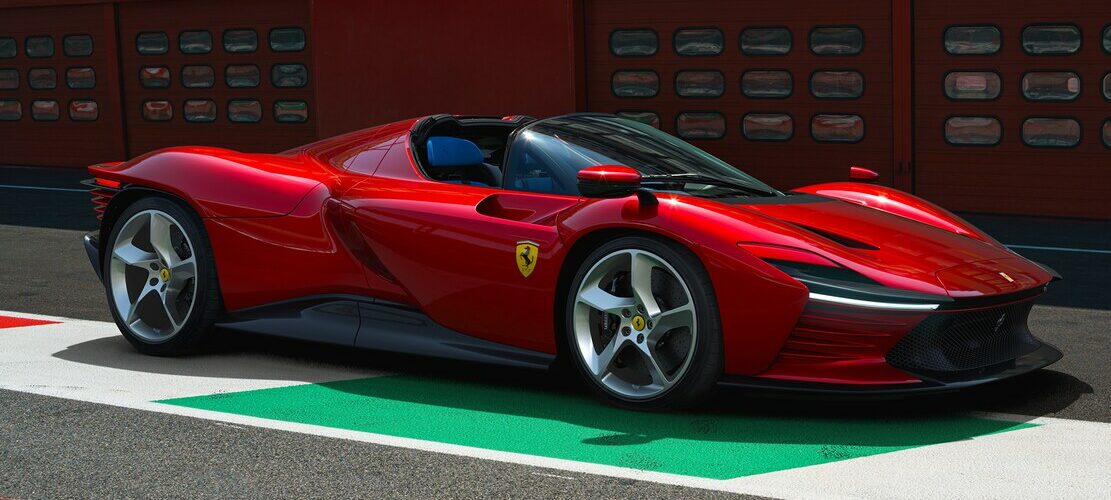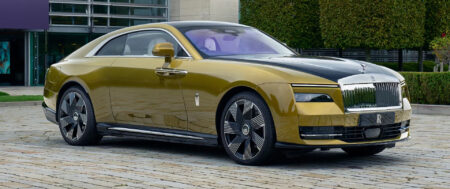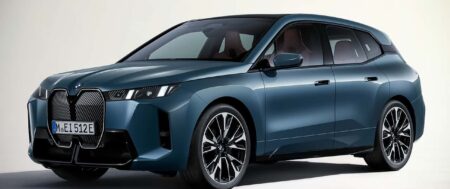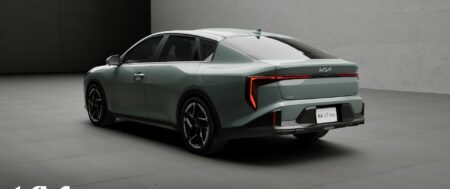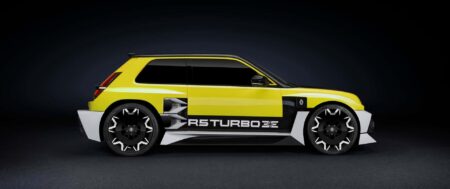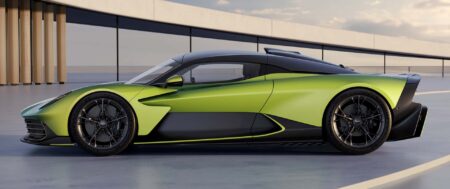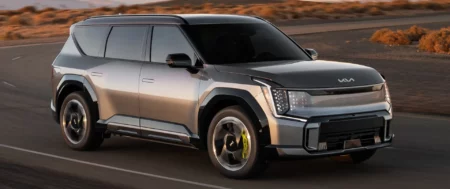What’s not to like about a mid-engine Ferrari Daytona SP3 with an 828-hp, naturally aspirated V-12?
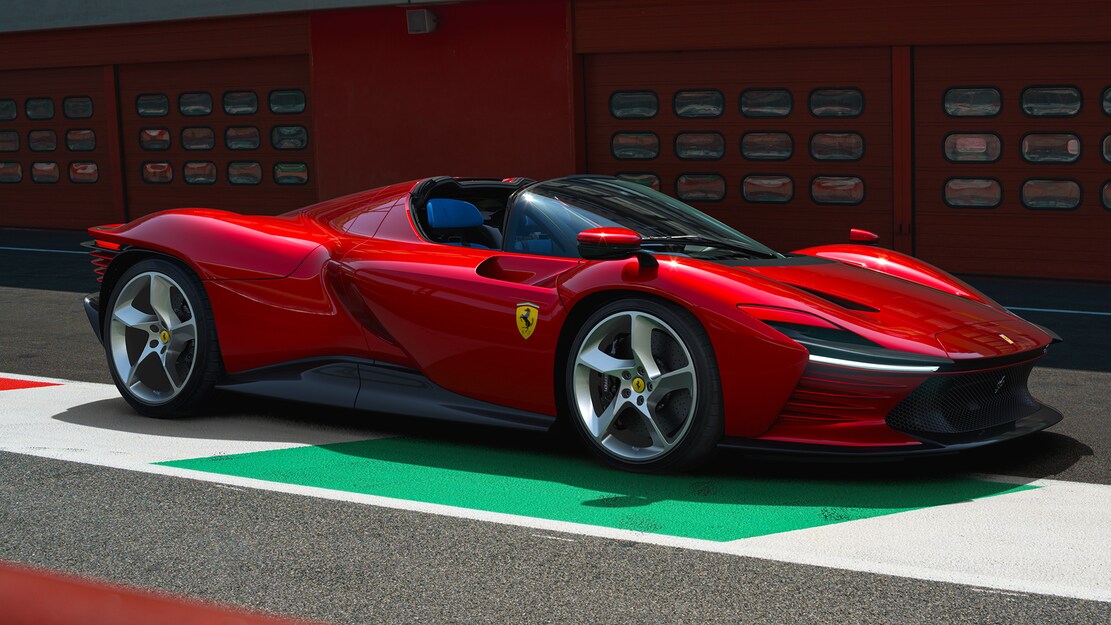
We know what you’re thinking: Daytona? That was a classic front-engine V12 coupé Ferrari built from 1968 to 1973, wasn’t it? And the 2023 Ferrari Daytona SP3, the third car in Ferrari’s limited edition Icona series, looks nothing like it.
It’s not meant to. The Daytona SP3, powered by an 828-hp, naturally aspirated V-12 mounted behind the driver, has been designed to evoke the spirit of Ferrari sports prototype racers from the ’60s and ’70s (as seen in the photo gallery). The name celebrates Ferrari’s one-two-three finish in the 1967 24 Hours of Daytona, revenge, says marketing chief Enrico Galliera with a smile, for the drubbing famously handed out to Maranello by Ford at Le Mans in 1966.
The other Daytona? It was never officially called that. Ferrari has always referred to the iconic coupe as the GTB 365/4.
In simple terms the Daytona SP3 is based on the underpinnings of the LaFerrari Aperta hypercar and is powered by an engine from the 812 Competizione. Just 599 will be built, and while U.S. pricing has yet to be confirmed, it costs the equivalent of $2.3 million in Italy.
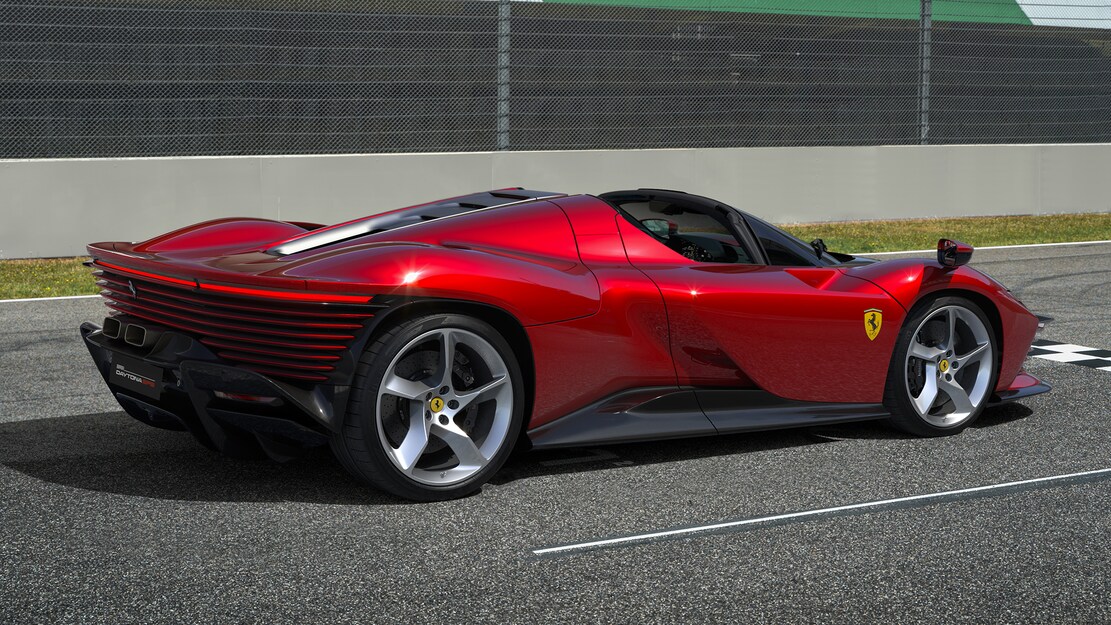
Ferrari’s Icona cars are not retro cars, insists Enrico Galliera. Rather, they are designed to take themes and concepts from Ferraris of the past, and reinterpret them in a modern way, with modern materials and technologies.
The Monza SP1 and Monza SP2 Icona cars, for example, channel the mood of the Ferrari barchettas from the 1950s. And you can see the spirit of cars like the 330 P3 and P4, the 512S, and the 350 Can-Am in the Daytona SP3’s voluptuous haunches and the close-coupled cockpit. And there are hints of the slab-sided 312PB and 512 M at the front of the car, and on the doors.
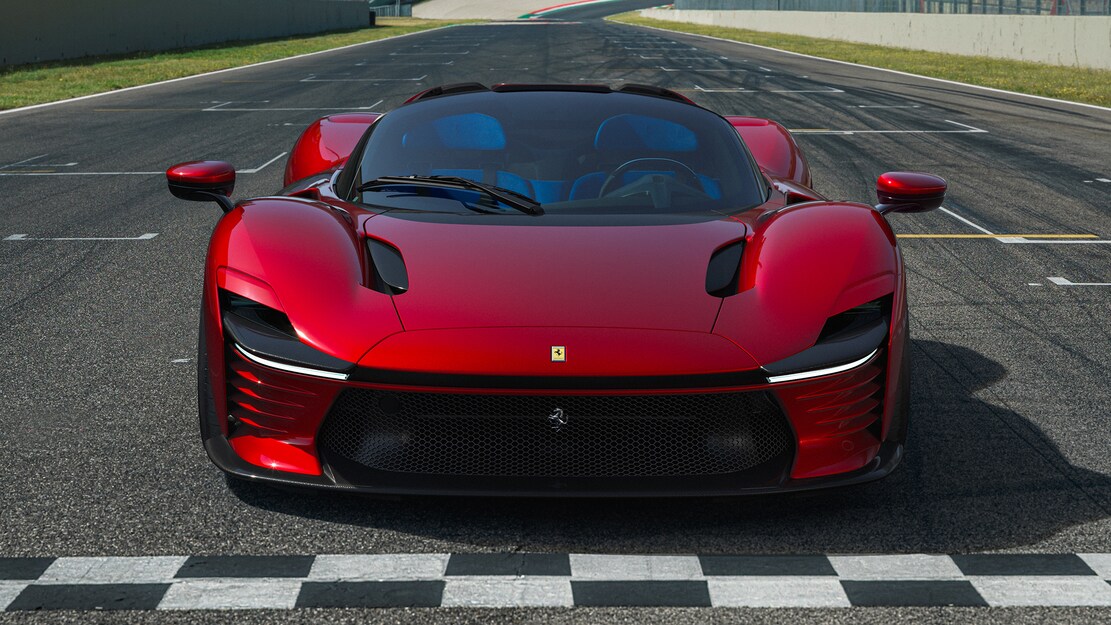
But the closer you look, the more state-of-the-art this Ferrari reveals itself to be. The bodywork isn’t shaped just to look pretty: It incorporates sophisticated aerodynamics, including flicks on the front corners to increase downforce, sheer surfaces on the front fenders and doors that help control airflow along the side of the car, and chimneys that bring air from under the car and direct it past the rear haunches and over the top surface of the engine cover and towards the subtle rear spoiler. Ferrari chief technology officer Michael Leiters says the Daytona SP3 generates just over 500 pounds of downforce at 125 mph without any active aerodynamic devices.
Ferrari design chief Flavio Manzoni’s favorite view of the wasp-waisted Daytona SP3 is from the rear, where a stack of body-colored bars wrap around the back to artfully disguise the venting required to deal with the thermal loads from the mighty 6.5-liter V-12.
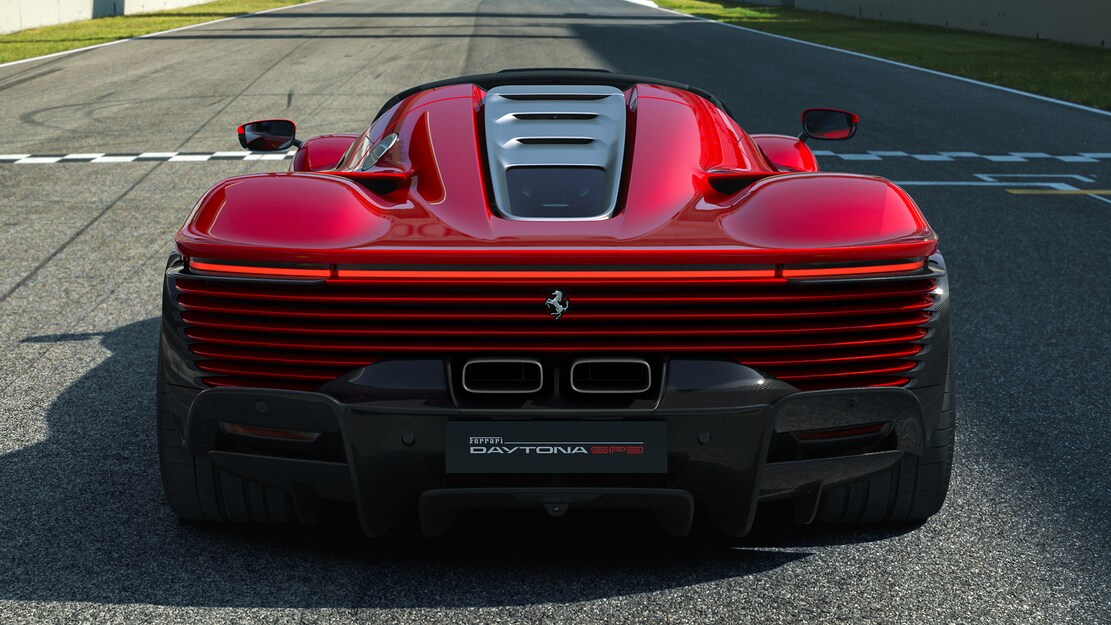
The revised engine is codenamed F140HC and makes its 828 horsepower at a dizzying 9250 rpm, and its 514 lb-ft of torque at 7250 rpm. It’s the most powerful internal combustion ever built by Ferrari. It will rev to 9500 rpm courtesy of new titanium connecting rods, which are 40 percent lighter than equivalent steel items, new pistons, a lighter and rebalanced crankshaft, and sliding finger cam followers, a low-mass, low friction technology borrowed from Ferrari’s F1 engines.
“It’s close to the limit,” acknowledges Michael Leiters.
Driving the rear wheels through a seven-speed dual clutch transmission similar to that of the LaFerrari, the 3500-pound Daytona will storm from 0 to 62 mph in 2.85 seconds, says Leiters, and hit 124 mph in 7.4 seconds. Top speed is more than 211 mph.
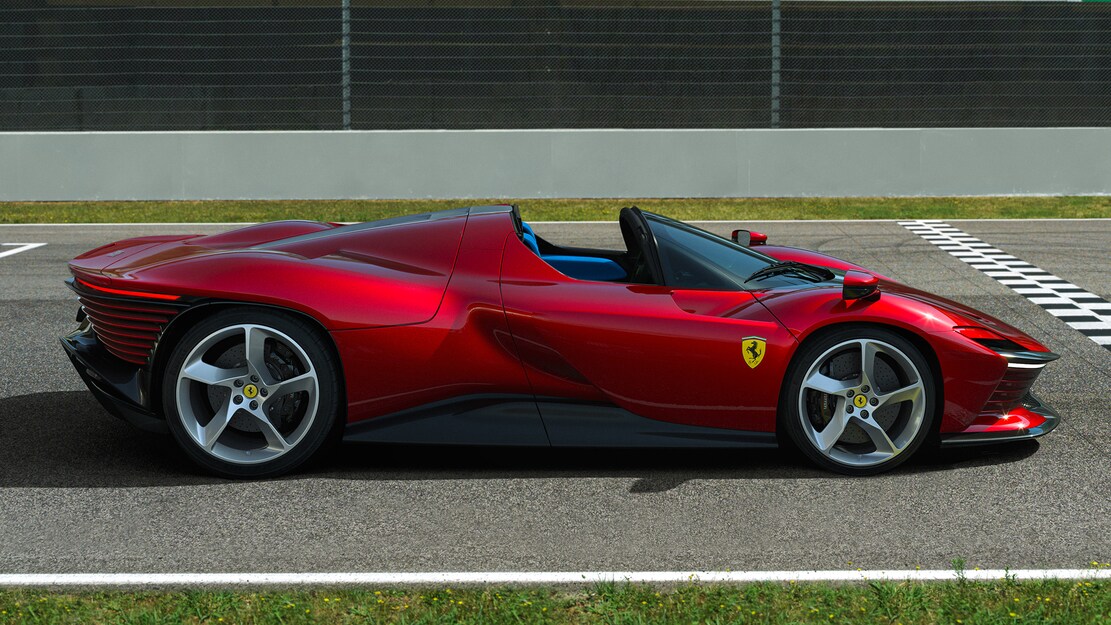
Suspension layout and geometry is the same as that of the LaFerrari, as are the giant 15.7-inch front and 15.0-inch rear brakes. And like the LaFerrari, the Daytona SP3 rolls on 20-inch front and 21-inch rear wheels, though their five-spoke design has been optimized to help extract air from the wheel wells. The tires are Pirelli P Zero Corsas in size 265/30 at the front and 345/30 at the rear, developed especially for the car and designed to maximize stability in low grip conditions.
The Daytona SP3 comes with an upgraded version of Ferrari’s clever Side Slip Control system dubbed SSC6.1 and is the first mid-engine V-12 Ferrari to have the Ferrari Dynamic Enhancer (FDE) system that will allow drivers to drift the car if they want, automatically keeping the maximum yaw angle under control by adjusting the brake pressure at each wheel. FDE can activated with the manettino switched to Race and GT-Off modes.
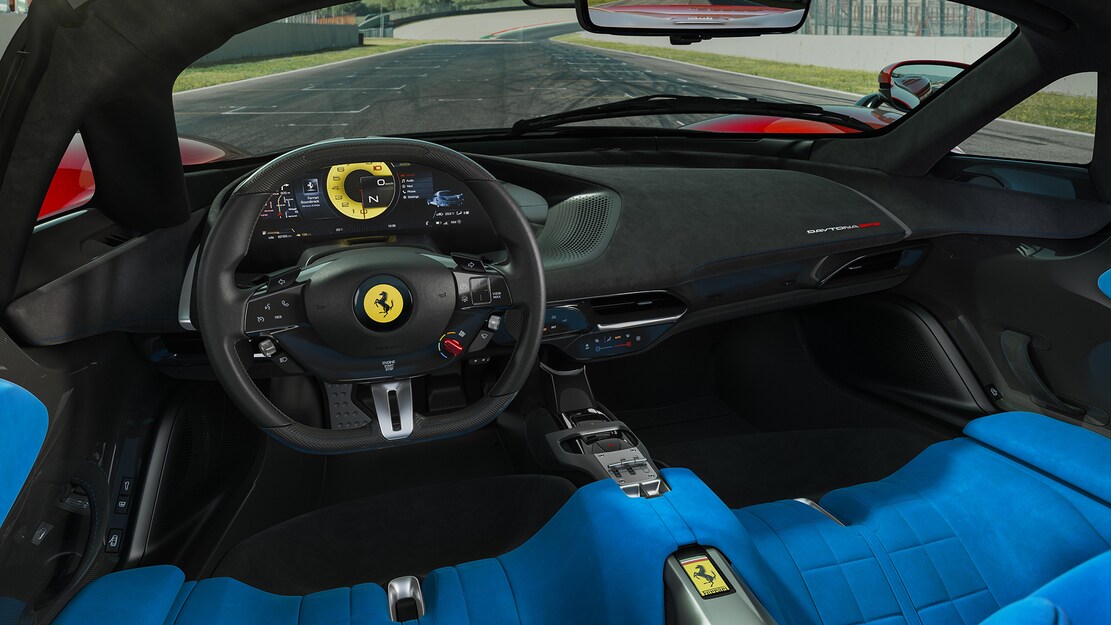
The Daytona SP3 cockpit is a tight fit, especially if you’re trying to wriggle past the doors with the carbon-fiber targa top in place. (A cloth cover packed into the tiny frunk provides emergency shelter if you’re caught in a downpour without the carbon roof.) The seats are fixed, their basic shape integrated into the composite central tub and covered with foam. Making yourself comfortable behind the wheel means adjusting the reach and rake of the steering wheel and moving the adjustable pedal box. This has helped reduce weight and kept the car’s overall height to just 45 inches, which also helps reduce drag.
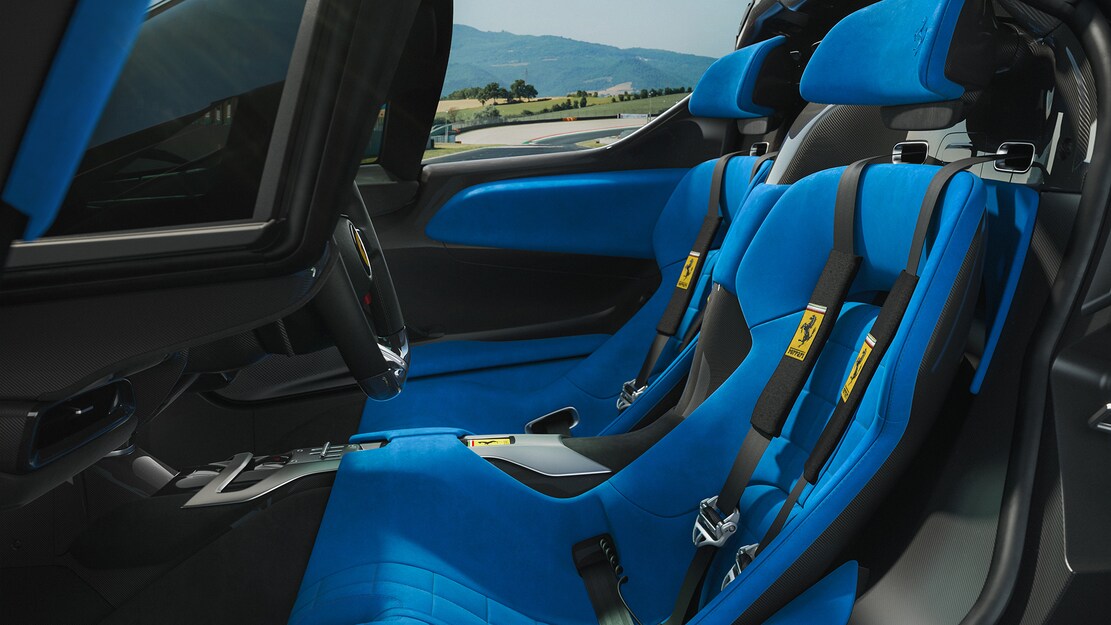
The driving position is lower and more reclined than in other Ferraris, similar, the company says, to that of a single seater. The view through the windshield is spectacular, the bulge of the front fenders amplified by the low hood, the front wheels seemingly so close you could almost reach out and touch them.
The Daytona SP3’s steering wheel features the same Human-Machine Interface (HMI) already seen on the SF90 Stradale, Ferrari Roma, SF90 Spider, and 296 GTB, continuing the Ferrari “hands on the wheel, eyes on the road” philosophy. Touch controls allow drivers to operate 80 percent of the Daytona SP3’s functions without moving their hands. The instrument panel is a 16.0-inch curved digital display.
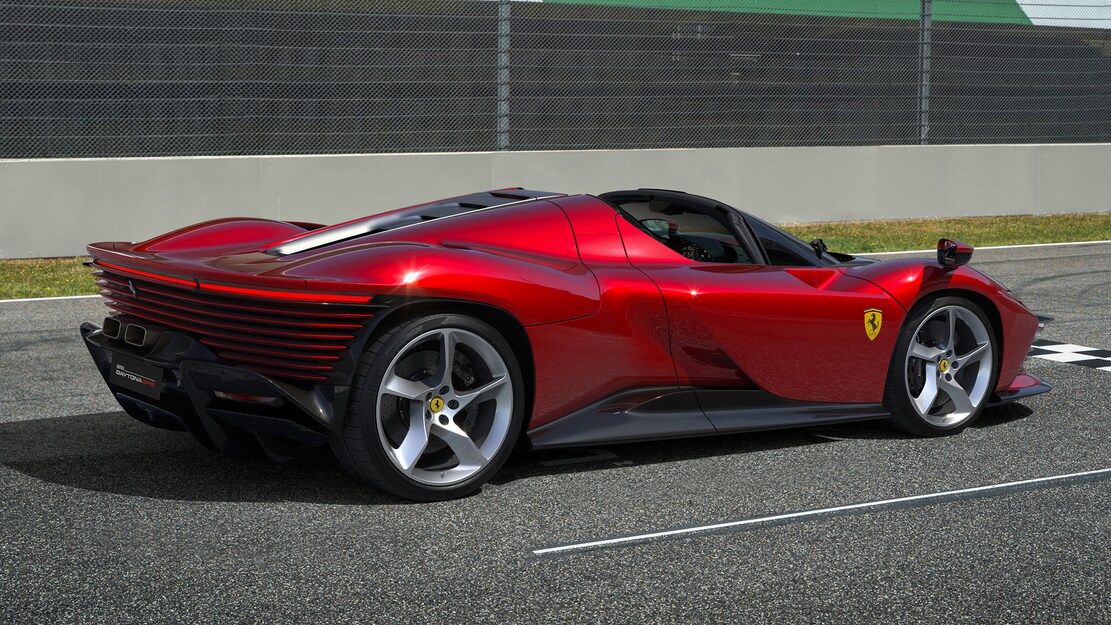
Unlike the SP1 and SP2 Monzas, which cannot be registered in the U.S. (and some other countries) because they have no windshield, the Daytona SP3 has been homologated for all markets worldwide. But even if you could afford a Daytona SP3, you couldn’t have one: Ferrari says all 599 have already been snapped up.
